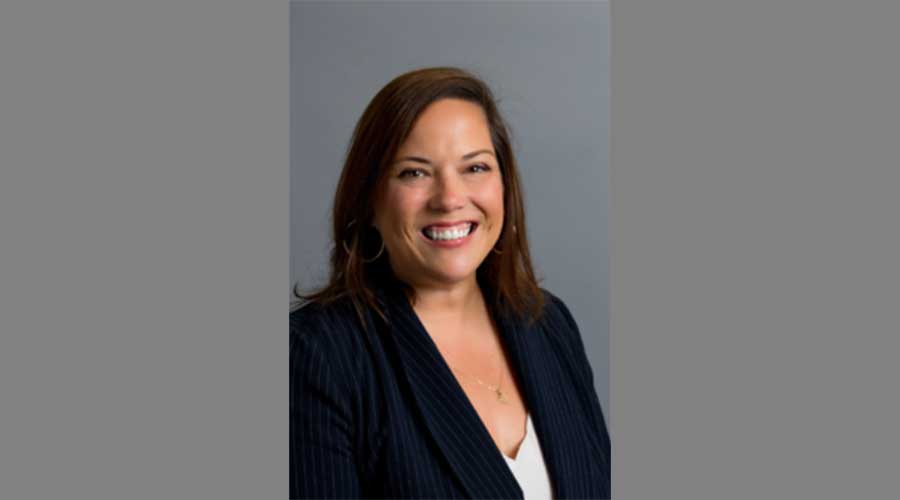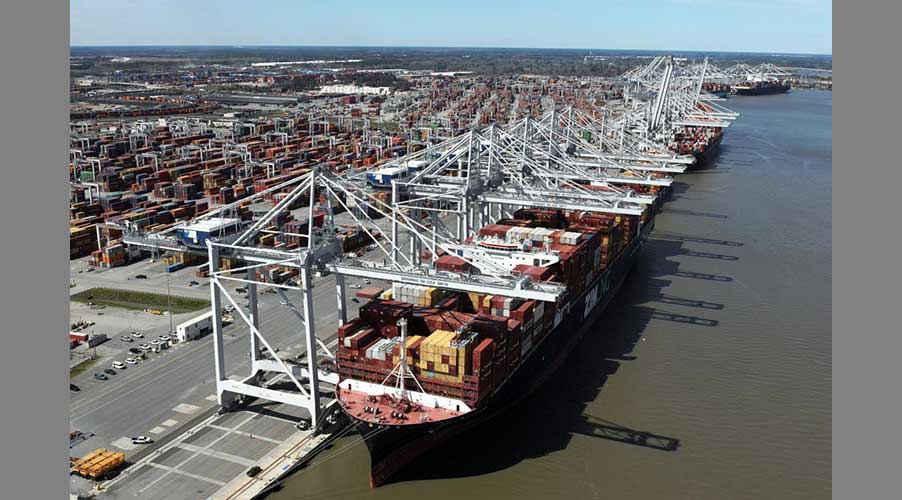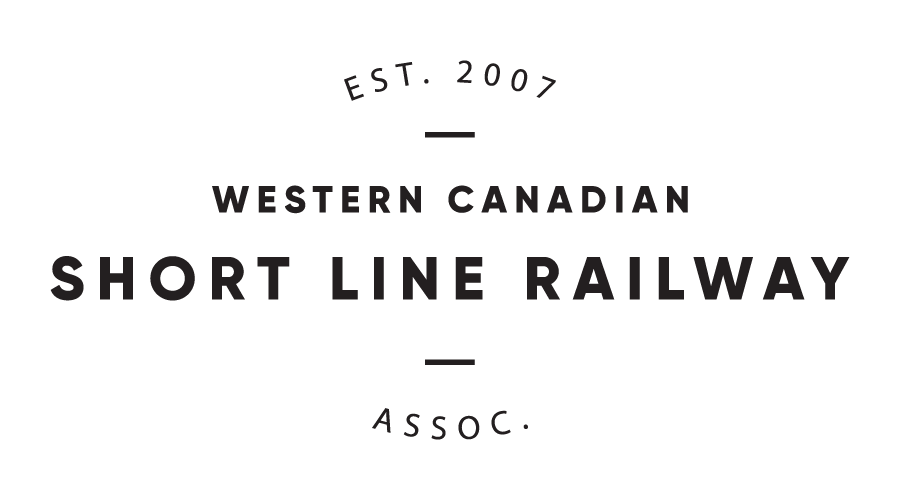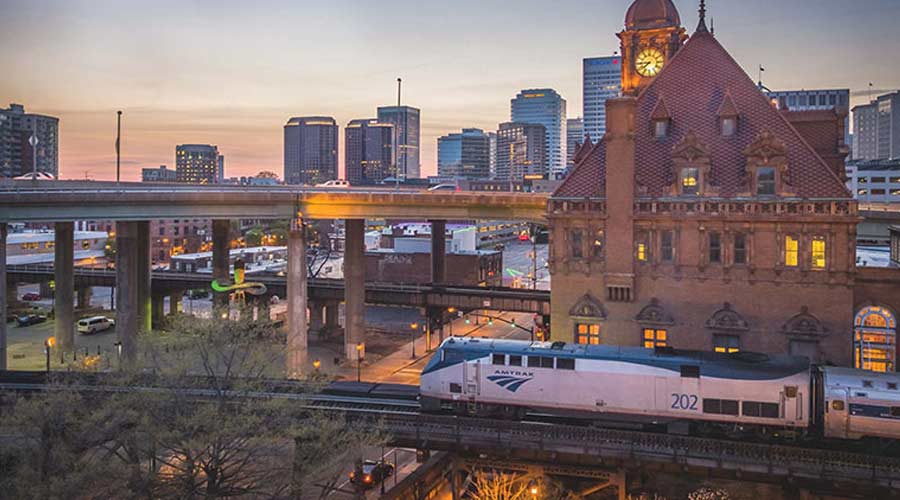Newsletter Sign Up
Stay updated on news, articles and information for the rail industry
Stay updated on news, articles and information for the rail industry
RAIL EMPLOYMENT & NOTICES
Rail News Home
Passenger Rail
Rail News: Passenger Rail
1/11/2001
Rail News: Passenger Rail
Transit systems seek 'safe and sound' solutions
advertisement
Twenty years ago, rail transit systems — especially subways — had a reputation for being unsafe; Home Sweet Home for the criminally inclined. For example, part of Southeastern Pennsylvania Transportation Authority’s (SEPTA) system was nicknamed "Tunnel of Terror" by local media. But while that reputation was not entirely undeserved, rail transit systems nationwide have since put a lot of time and money into safety and image enhancement.
Ten years ago, SEPTA’s subway security was handled by local police. Generally, the transit beat was considered undesirable and sometimes the result of getting on the bad side of whomever wrote the assignments. But then Pennsylvania legislation enabled SEPTA to have its own sworn police department.
Today, 250 officers patrol the agency’s subway system and facilities. And crime dropped a staggering 89 percent systemwide in the past decade.
"I can’t remember the last felony we had," says SEPTA spokesman Richard Maloney.
And that’s not unusual anymore.
Washington Metropolitan Area Transit Authority (WMATA) employs its own 320-strong sworn police force — including the 18-member 54th class of officer recruits graduated Jan. 5. Even with Washington, D.C.’s notorious crime rate, most of WMATA’s non-personal offenses are people stealing items from inside parked autos. To combat that crime, WMATA began a parking observer program. Non-police officers monitor parking lots and structures and contact police when they see anything suspicious.
The city of Los Angeles likely wins the dubious distinction of having the largest gang population. And Los Angeles County Metropolitan Transportation Authority (MTA) lines run through some of the most gang-infested parts of the county, says Paul Lennon, MTA managing director of safety and security.
But MTA has a very low crime rate, too.
In November, MTA’s light-rail Blue Line logged 1.54 million boardings — but only eight major crimes and 29 misdemeanors. The light-rail Green Line recorded 642,000 boardings, seven major crimes and 73 misdemeanors — primarily vandalism. Crime rates in the neighborhoods in which these lines operate are 10 to 12 times higher.
"[The rail system] is a safe haven in some of the roughest areas in the United States," says Lennon.
MTA’s Red Line subway in November logged the system’s best crime rate: three major crimes and 26 misdemeanors committed out of 2.5 million boardings.
How do these systems keep their trains and stations safe?
"We don’t tolerate quality-of-life crimes," says Dan Cowden, MTA director of security.
It’s also known as the "broken window" theory of law enforcement, he says: "You take care of the little things. That prevents the larger crimes from taking root."
Sometimes "taking care of the little things" includes fostering better communication on trains, as well as in stations.
A New Jersey Transit train Jan. 3 came to a sudden stop when a chunk of ice fell on an air-brake hose, separating it and putting the train into an emergency stop. In the ensuing three hours until the passengers could be loaded onto another train, some passengers became unruly, continuously pressing the emergency buzzer or trying to break the windows to restore ventilation to the powerless cars.
"It was a failure of crew members to, in a timely manner, communicate what the problem was," says Ken Miller, NJ Transit spokesman. "That’s something we’re working on."
NJ Transit has its own police department with full state powers. Signs posted on the trains caution passengers that the conductor is in charge and will summon police in case of misconduct or unruliness, and that police would remove that person from the train.
In response to last week’s incident, officials also announced that when trains are disabled longer than 15 minutes, management personnel would be dispatched to the scene to keep people informed and help with mechanical issues. The agency also arranged to cycle trains into heated garages where the packed snow and ice can melt from the trains components — hopefully decreasing the chances of another train being stopped by ice build-up.
Perhaps the greatest deterrent to crime in or near trains and stations is image itself. People always will feel more nervous going underground if the stations are not well lit, dirty (or even perceived to be dirty), or when law enforcement officers aren’t present, says SEPTA’s Maloney.
Well-lit, clean stations with a strong police presence can make all the difference.
"It sends a strong messages both ways," agrees LA MTA’s Cowden. "It tells the tourists we’re safe, and it tells the bad guys, ‘Don’t come here.’"
He credits New York City Transit for being the first to pilot "broken window" programs.
"People accepted [lack of safety] as a price of getting home from work," says Cowden. "When you eliminate small crime potential, you eliminate large crime potential."
The program also includes fighting the constant battle against graffiti.
Since the mid-1980s, SEPTA has had a policy of removing all graffiti daily, maintaining the then-general manager’s motto: "Get it off every day and you’re finally going to wear the enemy down."
WMATA, too, aggressively targets graffiti, temporarily pulling cars out of service if the writings can’t be washed off.
The result of transit’s changing image is evident in ridership numbers. From January through September last year, ridership on heavy rail increased 8.32 percent; light rail, 9.18 percent; and commuter rail, 5.25 percent, according to American Public Transportation Association data.
But none of this comes cheaply. At MTA, contracts for 233 Los Angeles Police Department officers for security within the city and 164 Sheriff’s Department officers for security in the county — for bus and train services — "takes a huge chunk of funding," says MTA’s Lennon.
"Our board has made a decision they want to have the best," he says. "It costs what it costs."
— Kathi Kube
To discuss transit system security, follow this link to Management Discussion Forum
Ten years ago, SEPTA’s subway security was handled by local police. Generally, the transit beat was considered undesirable and sometimes the result of getting on the bad side of whomever wrote the assignments. But then Pennsylvania legislation enabled SEPTA to have its own sworn police department.
Today, 250 officers patrol the agency’s subway system and facilities. And crime dropped a staggering 89 percent systemwide in the past decade.
"I can’t remember the last felony we had," says SEPTA spokesman Richard Maloney.
And that’s not unusual anymore.
Washington Metropolitan Area Transit Authority (WMATA) employs its own 320-strong sworn police force — including the 18-member 54th class of officer recruits graduated Jan. 5. Even with Washington, D.C.’s notorious crime rate, most of WMATA’s non-personal offenses are people stealing items from inside parked autos. To combat that crime, WMATA began a parking observer program. Non-police officers monitor parking lots and structures and contact police when they see anything suspicious.
The city of Los Angeles likely wins the dubious distinction of having the largest gang population. And Los Angeles County Metropolitan Transportation Authority (MTA) lines run through some of the most gang-infested parts of the county, says Paul Lennon, MTA managing director of safety and security.
But MTA has a very low crime rate, too.
In November, MTA’s light-rail Blue Line logged 1.54 million boardings — but only eight major crimes and 29 misdemeanors. The light-rail Green Line recorded 642,000 boardings, seven major crimes and 73 misdemeanors — primarily vandalism. Crime rates in the neighborhoods in which these lines operate are 10 to 12 times higher.
"[The rail system] is a safe haven in some of the roughest areas in the United States," says Lennon.
MTA’s Red Line subway in November logged the system’s best crime rate: three major crimes and 26 misdemeanors committed out of 2.5 million boardings.
How do these systems keep their trains and stations safe?
"We don’t tolerate quality-of-life crimes," says Dan Cowden, MTA director of security.
It’s also known as the "broken window" theory of law enforcement, he says: "You take care of the little things. That prevents the larger crimes from taking root."
Sometimes "taking care of the little things" includes fostering better communication on trains, as well as in stations.
A New Jersey Transit train Jan. 3 came to a sudden stop when a chunk of ice fell on an air-brake hose, separating it and putting the train into an emergency stop. In the ensuing three hours until the passengers could be loaded onto another train, some passengers became unruly, continuously pressing the emergency buzzer or trying to break the windows to restore ventilation to the powerless cars.
"It was a failure of crew members to, in a timely manner, communicate what the problem was," says Ken Miller, NJ Transit spokesman. "That’s something we’re working on."
NJ Transit has its own police department with full state powers. Signs posted on the trains caution passengers that the conductor is in charge and will summon police in case of misconduct or unruliness, and that police would remove that person from the train.
In response to last week’s incident, officials also announced that when trains are disabled longer than 15 minutes, management personnel would be dispatched to the scene to keep people informed and help with mechanical issues. The agency also arranged to cycle trains into heated garages where the packed snow and ice can melt from the trains components — hopefully decreasing the chances of another train being stopped by ice build-up.
Perhaps the greatest deterrent to crime in or near trains and stations is image itself. People always will feel more nervous going underground if the stations are not well lit, dirty (or even perceived to be dirty), or when law enforcement officers aren’t present, says SEPTA’s Maloney.
Well-lit, clean stations with a strong police presence can make all the difference.
"It sends a strong messages both ways," agrees LA MTA’s Cowden. "It tells the tourists we’re safe, and it tells the bad guys, ‘Don’t come here.’"
He credits New York City Transit for being the first to pilot "broken window" programs.
"People accepted [lack of safety] as a price of getting home from work," says Cowden. "When you eliminate small crime potential, you eliminate large crime potential."
The program also includes fighting the constant battle against graffiti.
Since the mid-1980s, SEPTA has had a policy of removing all graffiti daily, maintaining the then-general manager’s motto: "Get it off every day and you’re finally going to wear the enemy down."
WMATA, too, aggressively targets graffiti, temporarily pulling cars out of service if the writings can’t be washed off.
The result of transit’s changing image is evident in ridership numbers. From January through September last year, ridership on heavy rail increased 8.32 percent; light rail, 9.18 percent; and commuter rail, 5.25 percent, according to American Public Transportation Association data.
But none of this comes cheaply. At MTA, contracts for 233 Los Angeles Police Department officers for security within the city and 164 Sheriff’s Department officers for security in the county — for bus and train services — "takes a huge chunk of funding," says MTA’s Lennon.
"Our board has made a decision they want to have the best," he says. "It costs what it costs."
— Kathi Kube
To discuss transit system security, follow this link to Management Discussion Forum


 LRW Honors Amtrak’s Acheson As Railway Woman Of The Year
LRW Honors Amtrak’s Acheson As Railway Woman Of The Year
 From Editor-In-Chief Foran: Of Gender Equity And Inclusion
From Editor-In-Chief Foran: Of Gender Equity And Inclusion
 Spotlight On Some Of Today’s Rail Safety Products
Spotlight On Some Of Today’s Rail Safety Products
 Women of Influence in Rail eBook
Women of Influence in Rail eBook
 railPrime
railPrime







